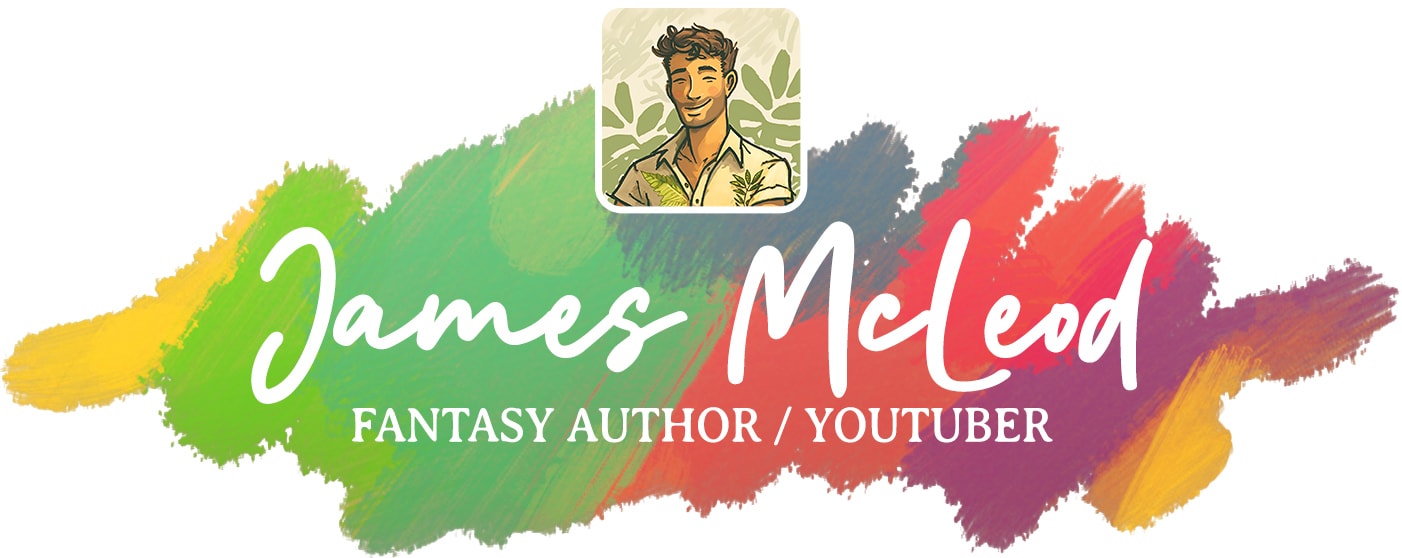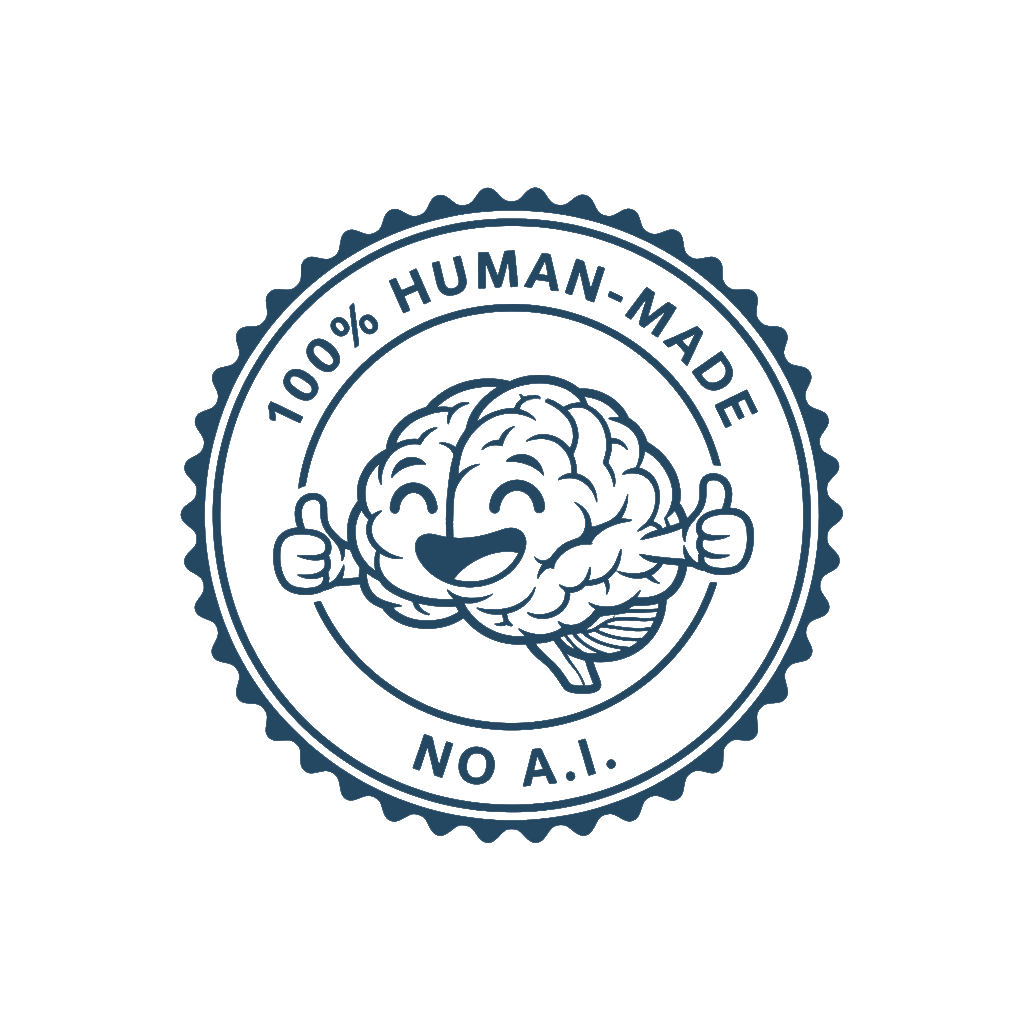THE MARINER SETS SAIL!
THU, DEC 11, 2025 - 14:27
Fantasy fiends, ahoy! The giving season has officially begun, so what better time to drop a little gift on you all?
If you’re in the mood for a tale of adventure, magick and mystery on the high-seas, head over to the Short Story Library and cast off with The Mariner!
VISIT THE LIBRARY
I’m so happy it’s finally ready to share with you all and, as usual, it’s free!
An audiobook version is on the way, so stay tuned for that.
Until then, peace!
Jim :)
INDIE AUTHOR BOOK FAIR 2026
FRI, NOV 14, 2025 - 10:01
Come and meet James McLeod at
The Indie Book Author Fair
SUNDAY, JAN 11, 2026. 9am to 4pm
Barwon Heads Community Hall, 77 Hitchcock Ave, Barwon Heads VIC 3227, Australia
Visit the official website
Yes, the Indie Author Book Fair is taking place once again in Barwon Heads, Victoria, and I’ll be there with a stack of books, a fashionably medieval table-covering, and a few free smiles (for those who really want one).
It's a beautiful location, close to the surf and sand and doused in fresh sea-air. So if you’re in the area, why not come along and say hi? I love meeting readers and chatting about fantasy, writing, and all things magickal. Plus, there will be heaps of other indie authors there too, so it’s a great opportunity to discover new voices and stories.
The event runs from 9am to 4pm at the Barwon Heads Community Centre and rumour has it that I'll have a freshly-released fantasy novel on offer!
Hope to see you there!
Jim :)
STORYTELLERS
SUN, SEP 07, 2025 - 14:26
Here's to the crazy ones. The misfits. The rebels. The troublemakers. The round pegs in the square holes. The ones who see things differently.
They're not fond of rules. And they have no respect for the status quo. You can quote them, disagree with them, glorify or vilify them. About the only thing you can't do is ignore them. Because they change things. They push the human race forward.
And while some may see them as the crazy ones, we see genius. Because the people who are crazy enough to think they can change the world, are the ones who do.
In the late 1990s, Apple ran an advertising campaign which not only summed up the company’s ambitions at the time, but defined heart and soul of their efforts for the next 20 years.
The ‘Think Different’ campaign was not just haughty-sounding advertising jargon. The slogan and accompanying manifesto told a story about Apple; where they were, who they wanted to be, and what kind of customer they were speaking to. It celebrated the outlier and spoke to a generation of artists, filmmakers, songwriters and dreamers who grew up in the confusion and drama of the 1980s.
To really hammer this point home, the TV and print ads featured a montage of famous ‘crazy ones’ — including Albert Einstein, Bob Dylan, Martin Luther King Jr., John Lennon, Mahatma Gandhi, Amelia Earhart, Pablo Picasso, Thomas Edison, and many more. It was a roll-call of creative and courageous visionaries and rebels.
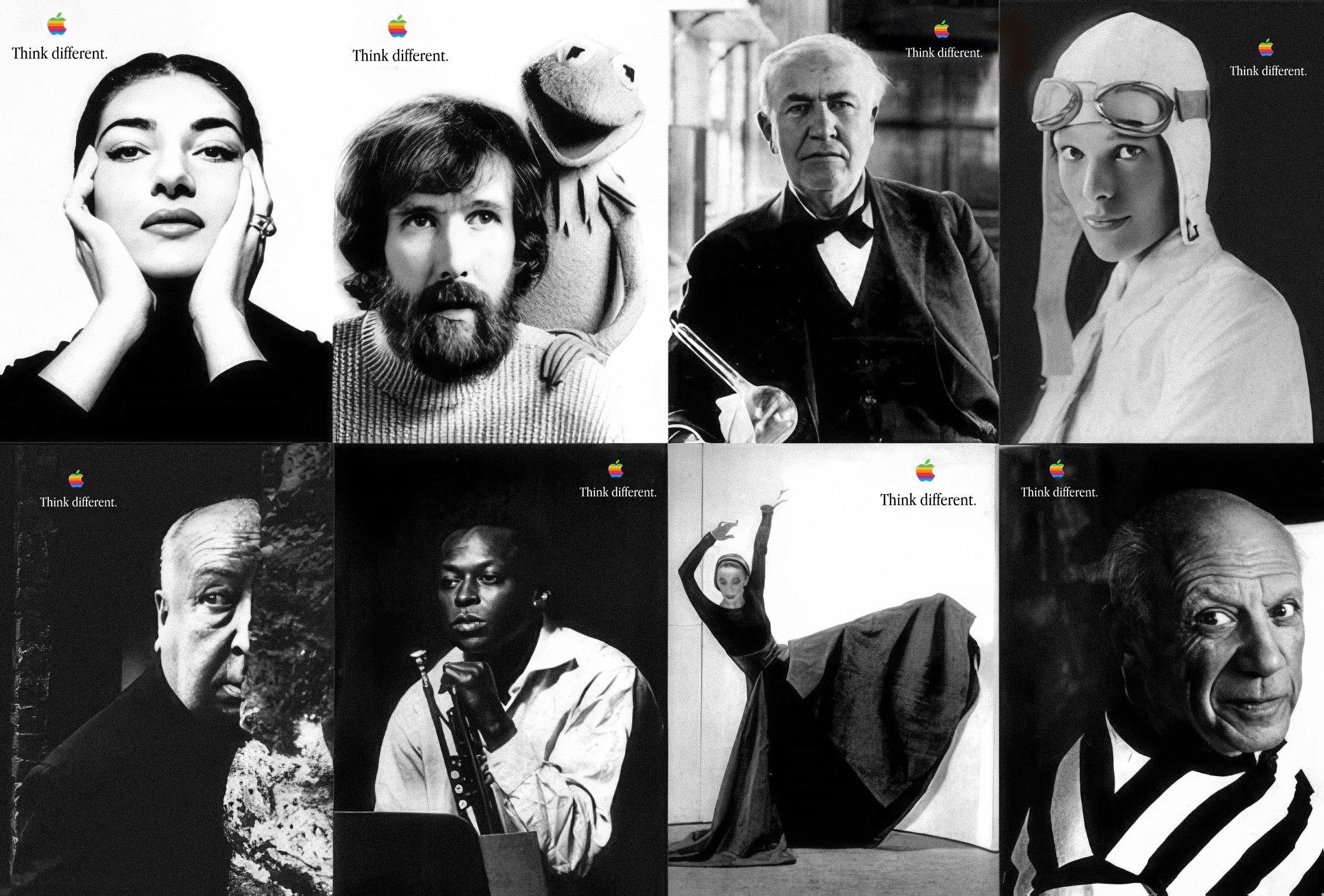 Apple's 'Think Different' campaign rounded-up some famous faces like Pablo Picasso, Amelia Earhart, and Jim Henson.
Apple's 'Think Different' campaign rounded-up some famous faces like Pablo Picasso, Amelia Earhart, and Jim Henson.
It's no surprise that Steve Jobs loved the campaign. His goal for Apple had always been to 'sell dreams' and to do that, he knew that Apple needed great storytelling.
Clearly, Apple found it, and 'selling the dream' is a talent which Apple has cultivated carefully over the years and never let slip. From the 1980s right up to today, from the original Macintosh launch in 1984 to Vision Pro in 2023, Apple has consistently used storytelling to create emotional connections with its audience, with product launches not just about specs and features; but tales which resonate with people's aspirations and values.
This is not a novel concept, of course. Car, cologne and beer companies all clued into the fact long ago that to sell a product well, that product needs to represent a lifestyle. What sets Apple apart is that their storytelling is not limited to marketing material, but has been quietly woven into their product line and ecosystem.
This year, Apple is going to release MacOS 26 (Tahoe), which introduces a new design language called 'Liquid Glass'. This is not just a gimmick or visual overhaul; it’s narrative development. It's Apple's way of signalling its ongoing commitment to innovation, user experience, and design excellence. And perhaps more importantly than that, it's about showing users the future of computing — or at least the future that Apple wants.
Liquid Glass is a triumph of UI design. A mix of solid and fluid, an ode to playful elegance, and a replication of real-world physics in the digital space — and that last point is important.
With the introduction of Vision Pro, Apple aimed to changed the way we think about computing. This device embraced a new way of interacting with digital content, blending the physical and virtual worlds, and signalling depth with shadow, transparency, translucency, and movement. Apple clearly wants to carry this new paradigm into its other products. Liquid Glass is therefore not just a big step forward in user interface design, it’s a way for Apple to tell their story about the future of computing and get people ready for what's coming next.
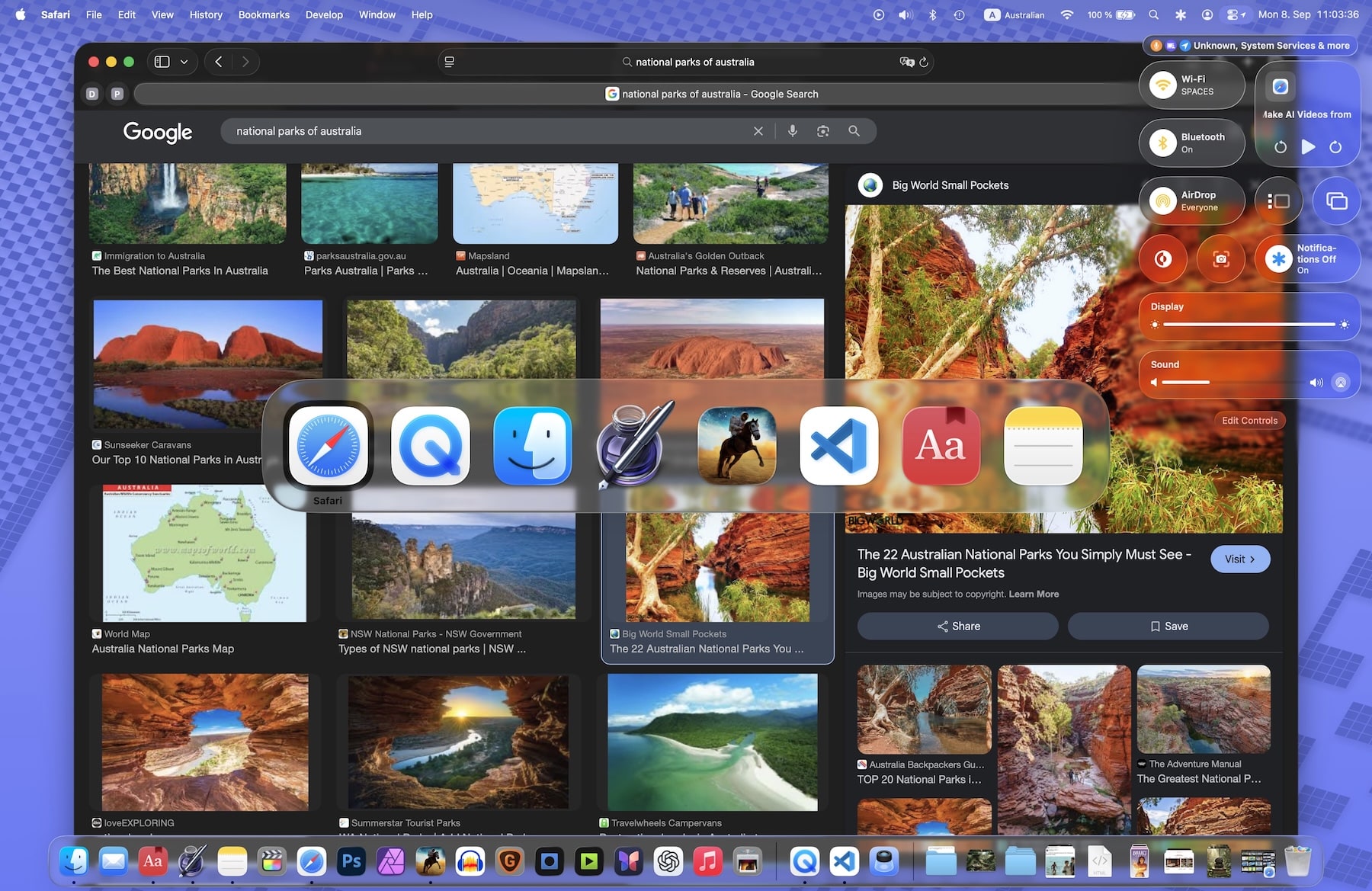 The new Liquid Glass UI language is elegant, playful, and future-facing.
The new Liquid Glass UI language is elegant, playful, and future-facing.
Of course, Apple has its critics. Since the announcement of Liquid Glass, howls of indignation have erupted across the internet, with some pointing out that the update is an 'accessibility nightmare!' with low readability or poor contrast (complaints which must willfully be ignoring the fact that Apple has for a very long time had perhaps the best Accessibility options in the entire tech sphere, with settings galore for altering the OS to be more readable or higher-contrast or so forth). Or that it's gimmicky and 'too like Windows 11', which is not a little insulting to Apple's design team…
It's often said that since Steve Jobs passed away in 2011, Apple has lost its way. That it has 'stopped innovating' or can't produce revolutionary products anymore. This, in my opinion, is absolute nonsense. Apple under Tim Cook has been fantastic.
Consider the Apple Watch, Airpods, Vision Pro, the M-series chips, the seamless ecosystem features like Handoff, Face ID, Continuity Camera, Live Translation, AI‑powered tools (alright, that's still being ironed out), all of which have appeared under Cook's tenure. Cook has overseen the biggest period of growth in Apple's history, and the company is now the first to reach a $3 trillion market cap. Not bad for a company that's supposedly 'losing its way'.
To me, MacOS Tahoe is another example of Apple’s ongoing commitment to innovation and product excellence. Despite all the criticism and bluster out there, actually using the updated OS is a joy. On iPad and iPhone, elements move and flow and respond to your touch in a way that feels natural and intuitive and fun, while on the Mac, things are toned down a little but still look absolutely 'lickable', as Steve Jobs once put it. The OS feels cleaner, snappier, and feels ready for the future in a way that, as usual, is going to be mighty hairy for the competition to try and copy (though they will undoubtedly try).
In fact, a strange thought occurred to me when it was announced; that in a way we've come full-circle. 25 years ago in 2000, Apple introuced 'Mac OS X', its tenth Operating System and complete re-write using a flashy new Unix core. The OS featured an interface called 'Aqua' which — as the name implies — was inspired by water.
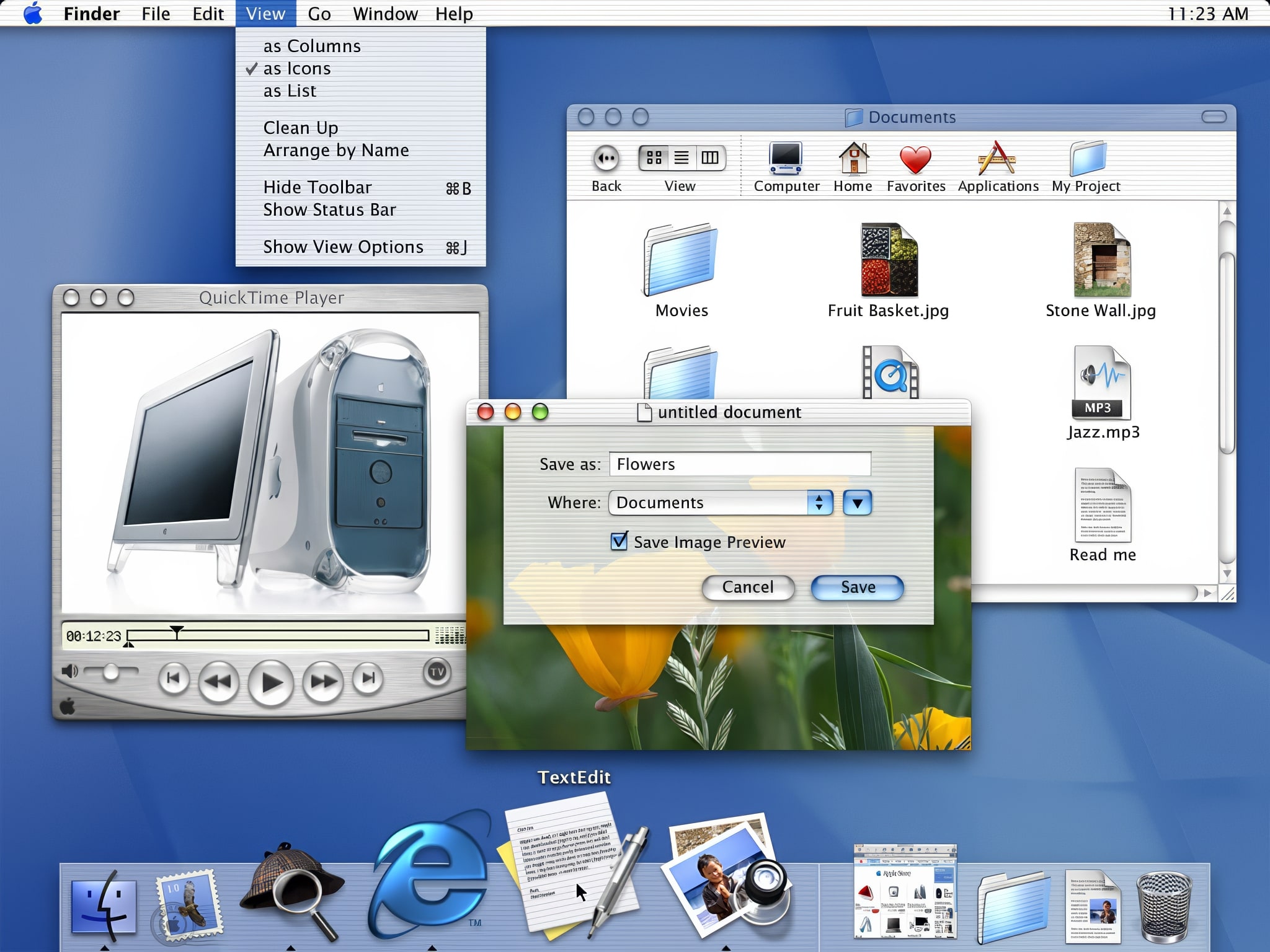 The 'Aqua' interface of Mac OS X bears more than a passing resemblance to Liquid Glass, with jelly-buttons and translucent panes.
The 'Aqua' interface of Mac OS X bears more than a passing resemblance to Liquid Glass, with jelly-buttons and translucent panes.
It looked amazing at the time. Corners were rounded, icons were translucent and glossy, and the whole thing felt fresh and new. It was a big leap forward from the old 'Mac OS 9', which by comparison felt clunky and primitive. And yet, Aqua was limited by the technology of the time. Screens were smaller, processors were weaker, and the best Apple could pull off in terms of fluidity was the 'genie' effect when minimising windows.
Now, 25 years later with Liquid Glass, it seems that Apple is finally able to realise that original vision in a way that feels modern and relevant. Indeed, my first thought upon seeing Liquid Glass was, 'this is the Aqua Steve wanted.'
The homage is poetic. Both the end of a story, and a whole new beginning for Apple.
THE MARINER APPROACHES!
WED, AUG 27, 2025 - 11:52
Hey there, fantasy-fiends! I’m thrilled to announce that my latest short story, The Mariner, is going to drop anchor soon, with the release date set for September 2025 (yep, that's next month!). And what's it about…?
In the archipelago of Paeri, a young sailor named Kama leads a double-life. A crewman aboard a trading vessel, he also trains to become an island champion, or 'Ayuku'.
This is a life of hard work, discipline, and duty, and one which is meant to prepare him—like all such champions—to defeat a legendary threat.
All islanders in Paeri know of the Sea-Bane, a monstrous creature which awakens every 90 years and which has laid waste to entire islands in the past. And the 90 year cycle is almost at an end…
Can Kama rise to the occasion?
I’ve always been fascinated with the adventurous spirit of traders, merchants, and explorers throughout history—those intrepid characters from every culture and country who broaden horizons and create stories that ignite the human imagination. And here, I hope to contribute a yarn of my own.
Written with Greek epics and historical voyages in mind, The Mariner tells a story of self-discovery, courage and magick, which I think will strike a chord with anyone who finds the maritime world of old as intriguing as I do.
This story is also going to become yet another entry in my fabtabulous SHORT STORY LIBRARY – a freshly-minted repository of bite-sized fantasy-adventure. If you’re after a little escapism with an exotic twist, the Short Story Library is for you! And more excitingly still; these little stories come with FREE audibook versions! How cool is that! Just head to a story and click ‘DOWNLOAD AUDIOBOOK’ and you can listen to your little heart’s content!
New short stories and free audiobooks are arriving there all the time, so stay tuned, and I hope you enjoy.
Jim :)
THE LIBRARY IS OPEN
FRI, JUL 11, 2025 - 14:33
Fantasy fans, rejoice — because today you’re in for a treat!
Recently, Jimzip.com underwent a big overhaul with an entire new section added. The new Short Story Library is a repository for bite-sized fantasy and adventure, updated with new stories frequently and totally free to read.
But it gets better – because today I’m thrilled not only to announce that a new short story, ‘The Masked Regent’, has been added, but that stories are getting audiobook versions as well!
Yep. You can head over to the library and listen to it right now. And more audiobooks are on the way.
VISIT THE LIBRARY
I’m proud of my stories, big and short, and have vowed never to use AI in my writing. My writing is 100% human-made, ideas and all, and takes time to plan, write, edit, and share. So if you appreciate and like what you read, why not buy me a coffee as a thanks?
You can do so at: Paypal.me/Jimzip
The new Short Story Library is a repository for bite-sized fantasy and adventure, updated with new stories frequently and totally free to read.
For now though, thanks for being awesome and keeping reading alive. Now, I have to get back to it!
Jim :)
